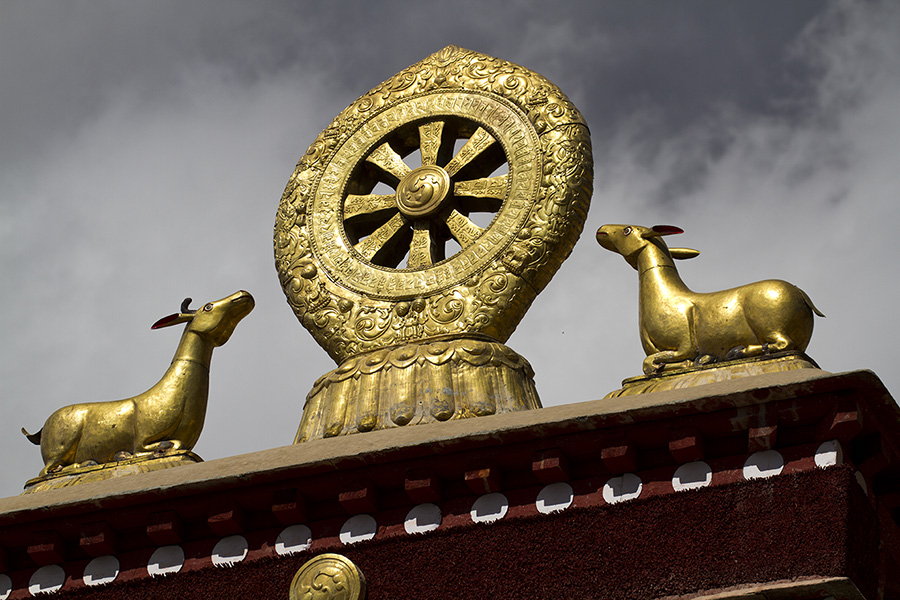
Buddhism is a world religion with an historical founder, the Buddha, or‘Awakened One,’ who became enlightened and taught a way to achieve release from the cycle of life, death, and rebirth. He expounded the doctrine of the Middle Way, the path between the extremes of asceticism and indulgence. The core of his teaching or dharma is the Four Noble Truths: life is suffering, suffering is caused by attachment, there is a way to overcome suffering, and the way is the Eight-fold Path.
Siddhartha Gautama, also known as Sakyamuni or ‘The Sage of the Sakya Clan,’ was born in what is now southern Nepal at the close of the 6th century BCE. After his enlightenment, he gave his first teaching at a deer park in Sarnath, India. This event is known as the ‘First Turning of the Wheel of the Law,’ or dharmacakra. After his death and cremation, his remains were distributed amongst his disciples, setting in motion the beginnings of Buddhist art.
At first, there were no depictions of the Buddha. Instead, his remains were installed in stupas, which are reliquaries or sacred containers, often embellished with symbols such as the wheel, two deer, a throne, or a lotus. These symbols, and the stupa itself, represented the historical Buddha and his teachings.

Wheel of Law with Deer, Yokhang Temple, Lhasa, 2011 / Photo courtesy of Michael Melford
Five hundred years later, in the 1st century, images of the Buddha in human form began to appear. These images, based on local traditions and materials, celebrated the life and teachings of the Buddha. The arts of Buddhism were created to express Buddhist thought in a material way. These expressions are rich, complex, and varied. This exhibit offers but a glimpse into the vast, spiritual realm of Buddhist art. The sculpture, paintings, and other artworks in this exhibit are all devotional objects created as elements of altars, temples, and private devotional spaces, where they came to life and had meaning through associations with specific people, places, and times.

